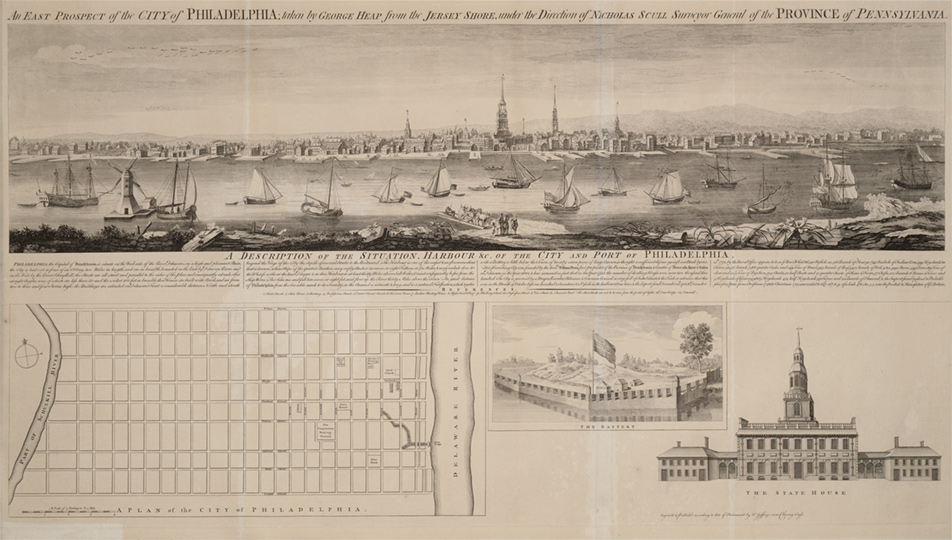
Thomas Penn, William Penn’s son, held three-quarters of the proprietorship of Pennsylvania and therefore had a strong interest in attracting settlers to rent or buy his land. In 1752 Penn commissioned a print to publicize Philadelphia’s prosperity but was dissatisfied with the final product. It was too large—more than six feet long —and did not show Philadelphia as a protected inland port. To resolve these problems, Penn hired Thomas Jefferys to re-engrave the view on a smaller scale with the addition of the New Jersey shoreline. Jefferys also added inset pictures of the downtown grid plan and views of the Battery and the State House to further show Philadelphia as a well-ordered city.
Twenty years later, London engraver Carington Bowles revived the original drawing that Penn had rejected. It was included in a series of cityscapes that were designed to be viewed with a “perspective glass,” an eighteenth-century viewing device that used a pair of carefully-placed mirrors to enhance the sense of pictorial depth. Bowles did not include Jefferys’ grid plan and building views because he was less interested in promoting the city than in adding a pleasing landscape to his series.